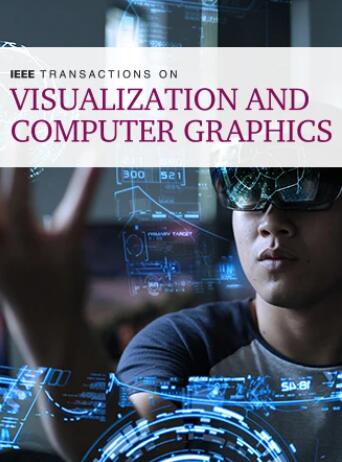DeepTree: Modeling Trees with Situated Latents
IF 6.5
1区 计算机科学
Q1 COMPUTER SCIENCE, SOFTWARE ENGINEERING
IEEE Transactions on Visualization and Computer Graphics
Pub Date : 2023-05-09
DOI:10.48550/arXiv.2305.05153
引用次数: 2
Abstract
In this paper, we propose DeepTree, a novel method for modeling trees based on learning developmental rules for branching structures instead of manually defining them. We call our deep neural model "situated latent" because its behavior is determined by the intrinsic state -encoded as a latent space of a deep neural model- and by the extrinsic (environmental) data that is "situated" as the location in the 3D space and on the tree structure. We use a neural network pipeline to train a situated latent space that allows us to locally predict branch growth only based on a single node in the branch graph of a tree model. We use this representation to progressively develop new branch nodes, thereby mimicking the growth process of trees. Starting from a root node, a tree is generated by iteratively querying the neural network on the newly added nodes resulting in the branching structure of the whole tree. Our method enables generating a wide variety of tree shapes without the need to define intricate parameters that control their growth and behavior. Furthermore, we show that the situated latents can also be used to encode the environmental response of tree models, e.g., when trees grow next to obstacles. We validate the effectiveness of our method by measuring the similarity of our tree models and by procedurally generated ones based on a number of established metrics for tree form.DeepTree:建模树与定位潜势
在本文中,我们提出了DeepTree,这是一种基于学习分支结构的发展规则而不是手动定义它们来建模树的新方法。我们称我们的深度神经模型为“定位潜”,因为它的行为是由内在状态(编码为深度神经模型的潜在空间)和外在(环境)数据(“定位”为3D空间和树结构中的位置)决定的。我们使用神经网络管道来训练一个定位的潜在空间,使我们能够仅基于树模型分支图中的单个节点局部预测分支生长。我们使用这种表示逐步发展新的分支节点,从而模仿树木的生长过程。从一个根节点开始,通过在新增加的节点上迭代查询神经网络生成一棵树,从而形成整个树的分支结构。我们的方法可以生成各种各样的树木形状,而不需要定义复杂的参数来控制它们的生长和行为。此外,我们表明,定位电位也可以用于编码树木模型的环境响应,例如,当树木生长在障碍物旁边时。我们通过测量我们的树模型的相似性和基于树形式的一些既定指标的程序生成的模型来验证我们方法的有效性。
本文章由计算机程序翻译,如有差异,请以英文原文为准。
求助全文
约1分钟内获得全文
求助全文
来源期刊

IEEE Transactions on Visualization and Computer Graphics
工程技术-计算机:软件工程
CiteScore
10.40
自引率
19.20%
发文量
946
审稿时长
4.5 months
期刊介绍:
TVCG is a scholarly, archival journal published monthly. Its Editorial Board strives to publish papers that present important research results and state-of-the-art seminal papers in computer graphics, visualization, and virtual reality. Specific topics include, but are not limited to: rendering technologies; geometric modeling and processing; shape analysis; graphics hardware; animation and simulation; perception, interaction and user interfaces; haptics; computational photography; high-dynamic range imaging and display; user studies and evaluation; biomedical visualization; volume visualization and graphics; visual analytics for machine learning; topology-based visualization; visual programming and software visualization; visualization in data science; virtual reality, augmented reality and mixed reality; advanced display technology, (e.g., 3D, immersive and multi-modal displays); applications of computer graphics and visualization.
 求助内容:
求助内容: 应助结果提醒方式:
应助结果提醒方式:


